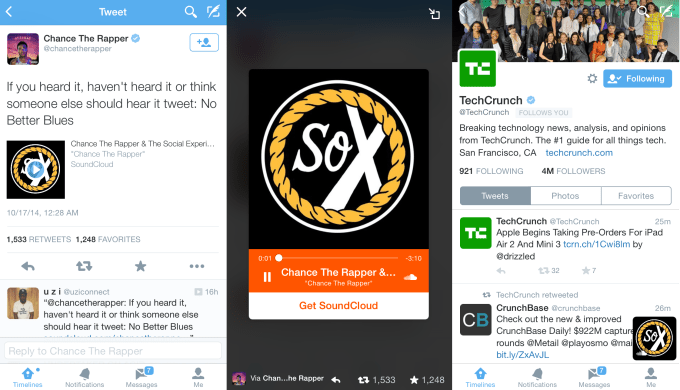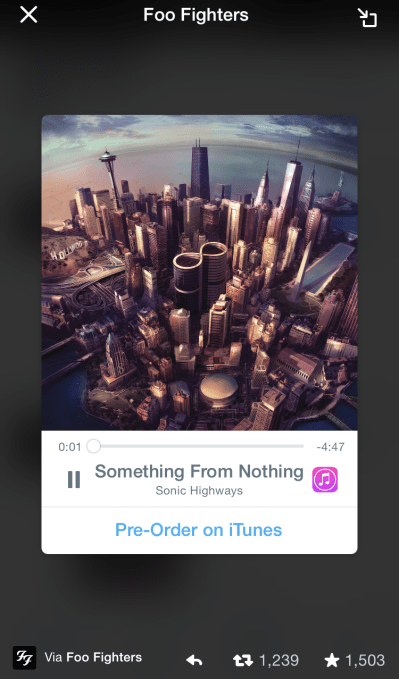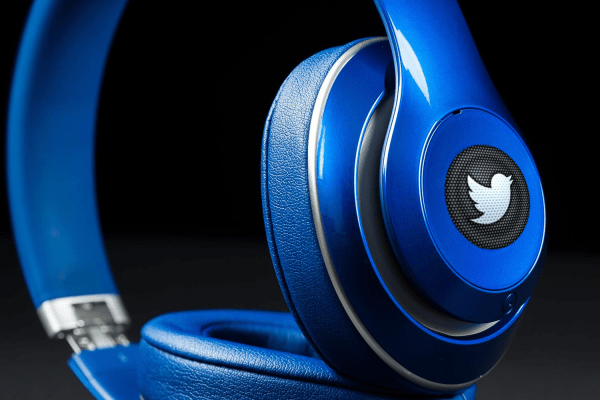Music is a special kind of content, and people discover it on Twitter. That’s why building a music experience outside the main Twitter app was a boondoggle, and treating music like any other piece of media within Twitter sells it short. These insights have led Twitter to a better strategy since killing off the Twitter Music app, according to a source at the company: Just improve the music listening and sharing experience inside Twitter.
Today we saw the first big execution of that strategy with the launch of the Audio Card on iOS and Android, which lets users listen to music from embeds in tweets, and dock the music player so the jams play on as they surf around Twitter. The first launch partners are SoundCloud and iTunes, but the plan is to get more music services integrated into the Audio Card.

[From left] 1. Twitter’s Audio Card can play music with one touch. 2. This opens the full-screen music player. 3. The player can be docked in the bottom left from continuous play while you browse more of Twitter.
A core tenet of the strategy is that music is different from photos or videos. You don’t take a quick three-second peek at a song like you do a photo, and you don’t stare at a song like a video. Listening to music is not a standalone activity. It’s quite literally become a soundtrack to everything else we do online.
But until now, Twitter on mobile didn’t understand that. While on the web you could expand a tweet and play music embedded inside of it while you kept scrolling through your timeline, on mobile embeds open in a separate window or in some case a separate app. That meant you had to leave Twitter to listen to a song in full, which doesn’t promote easy experimentation and discovery, or the song would stop playing if you wanted to keep reading other tweets or check your mentions.

The Audio Card finally treats music as a distinct content type meant for background play. Songs from SoundCloud and iTunes play with a single click, and can be docked to continue playing while you browse Twitter. It would make a lot of sense for Twitter to work out partnerships so songs from YouTube, Spotify, Rdio, Google Music, and more play nice in the Audio Card. Spotify and Rdio were launch partners for the Twitter Music app after all. Perhaps Twitter could one day parse what song is being shared and let you listen in whatever music service you prefer, similar to Bop.fm’s song links that let the listener decide.
By making the listening experience better, music tweets get more engagement and deliver more value to people who see them, which incentivizes people to share them. This unlocks a big opportunity to get music makers and critics more invested in tweeting. Artists will break new singles on Twitter if they get lots of plays. Reviewers will create native, 140-character assessments and post them with a song rather than just a boring links back to their website. I’d imagine both groups would be keen to see analytics on their song-tweet engagement.
Rather than building and maintaining a separate Music app of charts and lists, this strategy encourages Twitter to rely on an amazing social content discovery platform: Twitter. Better in-tweet listening will get people to follow more artists and critics, or follow friends who retweet them. It utilizes people’s existing feeds rather than forcing a different one on them.
If the plan comes to fruition, a lot more music conversations could gravitate to Twitter. That could solve two of Twitter’s other problems: growing its user count and timeline views. People might re-activate or sign-up for a Twitter count to hear songs the second they are released. And with a soundtrack caressing their ears that only lasts as long as they’re on Twitter, users might dig deeper into the timeline and explore other parts of the app until the last note plays.
